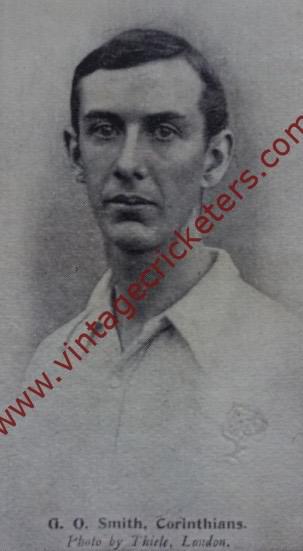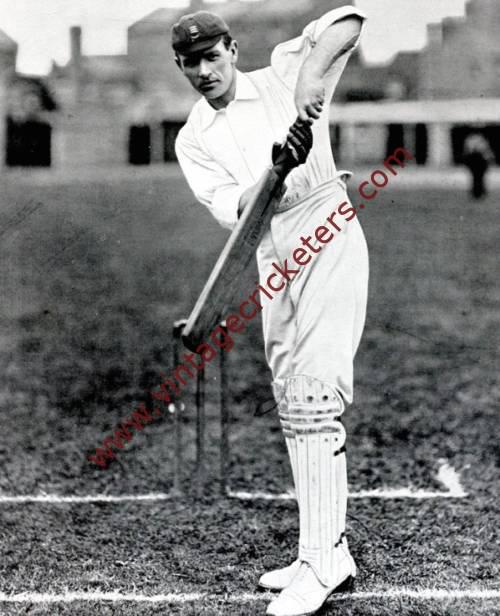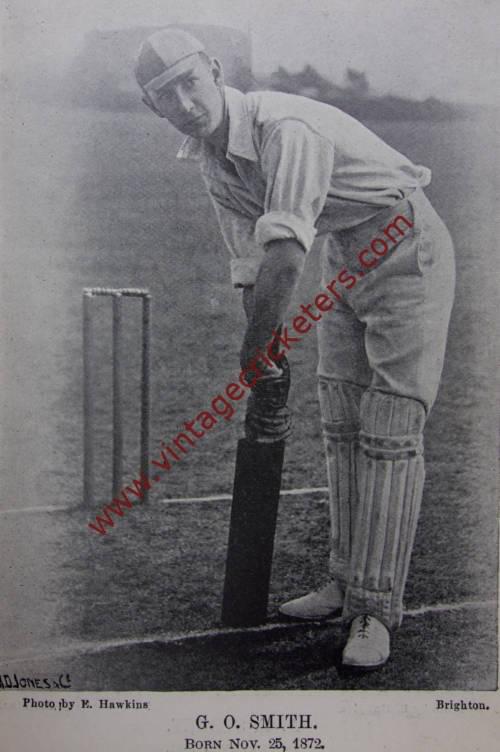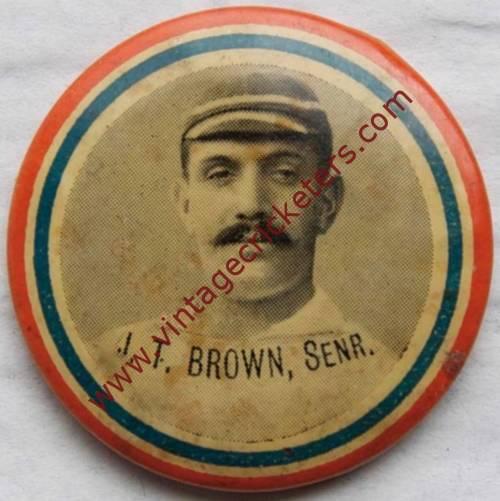Please choose your photo size from the drop down menu below.
If you wish your photo to be framed please select Yes.
Note: 16″x 20″not available in a frame.
Images can also be added to accessories. To order please follow these links
£8.95 – £49.95
Please choose your photo size from the drop down menu below.
If you wish your photo to be framed please select Yes.
Note: 16″x 20″not available in a frame.
Images can also be added to accessories. To order please follow these links
The maximum number of views of this element is reached.
Please contact the webmaster to enable unlimited views.
Pietermaritzberg, Natal born all-rounder Charlie Llewellyn was a hard hitting left-handed batsman, a slow left-arm bowler (with a dangerous slow left-arm wrist-spin delivery as part of his arsenal) and a great fielder, particularly at mid-off, and notably was the first non-white South African Test cricketer. Born out of wedlock to a Welsh father and black South African mother, the dark-eyed and dark-skinned Llewellyn was considered of mixed blood.
While the racism of late nineteenth-century South Africa had led to other leading non-white players being omitted from representative sides, his ability to pass himself off as white in some cases (Wilfred Rhodes described him as “like a rather sunburned English player”), helped clear the racial hurdle to selection and he was chosen to make his first class debut for Natal against Transvaal on 13th April 1895, where he took four wickets. While now accepted as a cricketer, Llewellyn would be referred to as “coloured” throughout his career and there are reports of his race-related mistreatment by other South African players.
Duly impressed with his cricketing skill, selectors chose him in a Natal side against Lord Hawke’s England XI and subsequently selected Llewellyn to make his Test debut for South Africa against England at Johannesburg on 2nd March 1896, aged 19 years and 155 days. Llewellyn failed to take a wicket in this first Test and was promptly omitted from the remainder of the series but responded by performing impressively in the 1897-98 and 1898-99 Currie Cups, which led to his recall to the South Africa team for the first Test of the 1898-99 series against England at Johannesburg in February 1899. Llewellyn impressed by taking five wickets, also making 38 in the first innings, but was surprisingly left out of the second Test.
At the end of the 1898-99 series Llewellyn, perturbed by the actions of the selectors and seeking financial security, left South Africa to play for English County Championship side Hampshireas a professional, on the recommendation of South African team mate Major Robert Poore, an ex-Hampshire cricketer on military assignment. He created a stir in his first match before he had qualified for Championship games by hitting 72 and 21 against the 1899 Australian touring side and taking 8 for 132 in the first innings on a true pitch. That performance gained him a place in Ranjitsinhji’s team strong English side touring America the following winter that included Jessop, Sammy Woods, Archie MacLaren, Stoddart, Bosanquet and Townsend.
He would star for Hampshire for over a decade, scoring 8,772 runs at 27.58 and claiming 711 wickets at 24.66 apiece and took 136 catches. One of his best all-round feats was against Somerset at Taunton in 1901 when he played an innings of 153 in one hundred minutes and took 10-183. His form was such that in 1902 Llewellyn was named in the English First Test squad against the touring Australians at Edgbaston, missing out on the final side. He was however included He scored over 1,000 runs for Hampshire five times and five times dismissed more than 100 batsmen in a season, achieving the double in 1901 and repeating the performance in all matches in 1908 and 1910. A bowler skilled in variation of pace and spin, he gained his best match-analysis at Southampton in 1901, dismissing 14 Worcestershire batsmen for 171 runs.
In 1902-03 Llewellyn returned to South Africa to play in the three Test series against Australia. He scored 90 in the First Test at Johannesburg that October, his highest Test score, as well as taking nine wickets in the match. Llewellyn took ten wickets in the second Test and six in the third to top the series bowling average at 17.92; a remarkable achievement considering Australia won the series 2-0.
Against the South Africans at Southampton in 1901 he reached the highest of his 15 centuries, making 216 put together in three hours and including 30 boundaries, and followed by sending back six batsmen for 105 runs and holding three catches. Twice he registered two centuries in a match: 102 and 100 against Derbyshire at Derby in 1905 and 130 and 101 not out against Sussex at Hove in 1909. His second innings at Hove took only an hour.
Llewellyn continued to shine for Hampshire, capped by his selection as one of Wisden’s Five Cricketers of the Year in 1910, his last year at Hampshire. He then toured Australia with PW Sherwell’s South African team, where his bowling served as fodder for Victor Trumper, before returning to England in 1911 to join Lancashire League club side Accrington, thereby becoming the first Test cricketer to play in the League.
In 1912, South Africa brought him out of first class retirement to play in the Triangular Tournament, scoring 75 in the First Test against England at Lord’s in June and a further half century against Australia at Lord’s in July.
Llewellyn retired from Test cricket after the Triangular Tournament, having played 15 Tests (five against England and ten against Australia), in which he scored 544 runs at 20.14 and 48 wickets at 29.60. He however continued to star in league cricket, finally retiring in 1938 at the age of 62. In 1913 while still with Accrington he scored 188 not out against Bacup, which remained the highest score in the Lancashire League until beaten by Learie Constantine’s 192 not out for Nelson v East Lancashire in 1939. He later played in the Bradford League for Undercliffe and even at the age of 55 he topped the bowling averages, in addition to being the only man to take 100 wickets in the Bolton League.
Even after his death in 1964, aged 87, Llewellyn remained a controversial figure, as Llewellyn’s daughter, resident in England, in 1976 publicly contested claims that he was not white, stating that his mother had been an English born white woman.
Llewellyn’s legacy as the first non-white South African Test cricketer remains large. During the apartheid period he was used to show that non-white cricketers could perform as well as their white counterparts, while modern day commentators have pointed to the erratic selection of Llewellyn for South Africa throughout his career as the result of prejudice due to his skin colour. While Llewellyn was the first non-white South African Test cricketer, it was not until Omar Henry took the field against India in November 1992 that South Africa had its second.
Vintage Cricketers was founded in July 2019. There are more photographs of this cricketer in the Vintage Cricketers library, which are due to be loaded in due course. In the meantime, please send a message to us using the contact form at the bottom left of this page and we can arrange to prepare and publish all images of this cricketer if you have a particular interest in him.
| Weight | N/A |
|---|



